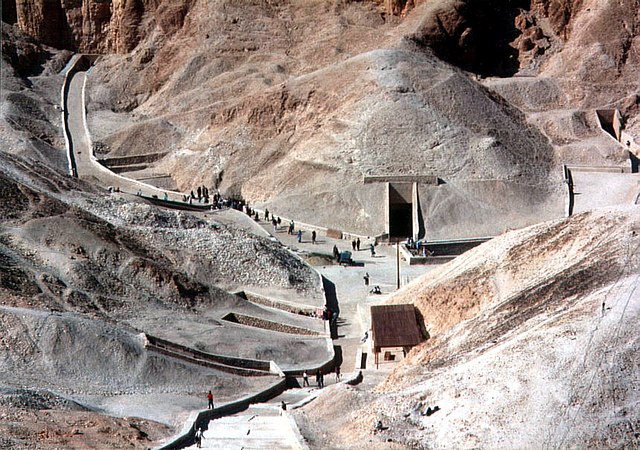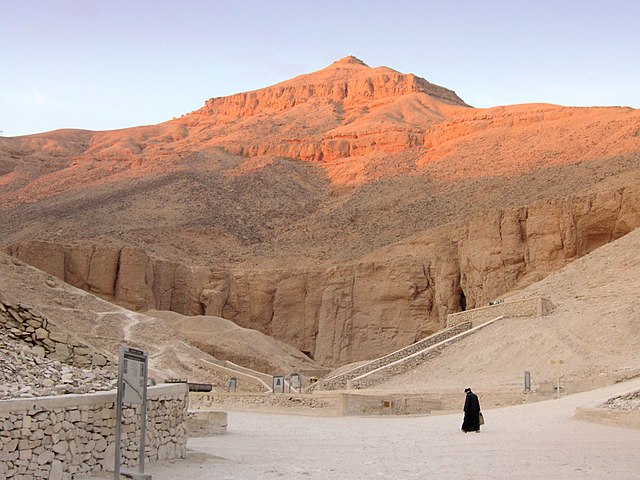Tomb KV17, located in Egypt's Valley of the Kings, is the tomb of Pharaoh Seti I of the Nineteenth Dynasty. It is also known by the names "Belzoni's tomb", "the Tomb of Apis", and "the Tomb of Psammis, son of Nechois". It is one of the most decorated tombs in the valley, and is one of the largest and deepest tombs in the Valley of the Kings. It was uncovered by Italian archaeologist and explorer Giovanni Battista Belzoni on 16 October 1817.
Interior of the tomb (upper pillared hall)
Depiction of Osiris in the Tomb of Seti I. Jean-Pierre Dalbéra
Pharaoh Seti I before Osiris, wall painting from KV17, Hall J, Pillar B, side a. Neues Museum
Pharaoh Seti I, detail of a wall painting from the Tomb of Seti I at the Valley of the Kings. Neues Museum
The Valley of the Kings, also known as the Valley of the Gates of the Kings, is an area in Egypt where, for a period of nearly 500 years from the Eighteenth Dynasty to the Twentieth Dynasty, rock-cut tombs were excavated for pharaohs and powerful nobles under the New Kingdom of ancient Egypt.
View of the central East Valley, showing the area around KV62.
Panorama of the valley, looking north
The "Sepulchres of the Kings of Thebes", Richard Pococke, 1743
Al-Qurn dominates the valley.








